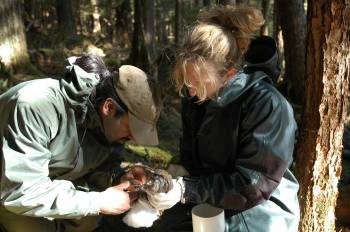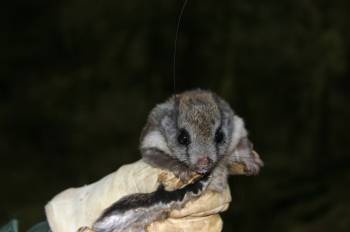Research Projects
The Spatial Ecosystem Analysis Lab is involved with the following completed and ongoing projects.
Climate Induced Shifts in Salmon Phenology (2010-present)
Hydro-ecological changes across Southeast Alaska and N British Columbia
Objectives

To quantify, understand covariates of, and project spatio-temporal trends in migration timing for economically, ecologically, and culturally important salmon species Southeast Alaska.
Methods
- Compile existing data into a unified database.
- Analyze historical phenological changes.
- Analyze phenological drivers geographically.
- Utilize models from above analyses to forecast phenological changes.
Status
Currently we are compiling salmon data and biological,climate, hydrographic, and geophysical data and synthesizing an integrated database for regional analysis.
Publications
Assessing the Sensitivity of Alaska's Coastal Rainforest Ecosystem to Changes in Glacier Runoff (2011-present)
The influence of glaciers and freshwater flow to the Gulf of Alaska
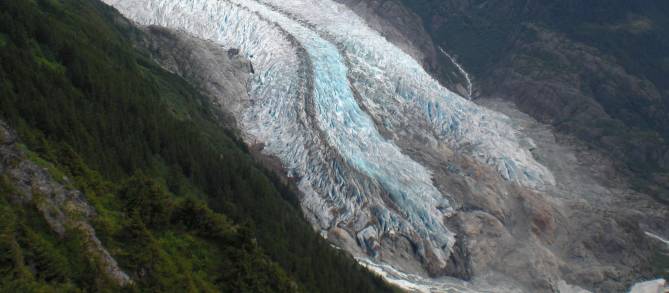
Objective
To quantify the regional effects of climate change on the timing, quantity and distribution of glacier runnoff to the Gulf of Alaska (GOA).
Methods
- Identify and quantify the major sources of freshwater runnoff to the GOA.
- Determine what proportion of glacier runnoff derives from glacier volume loss versus seasonal snowpack melt.
- Identify key sensitivities in physical and biogeochemical processes to the stability of the freshwater cycle.
Full Project Description
Assessing the Sensitivity of Alaska's Coastal Rainforest Ecosystem to Changes in Glacier Runnoff
Principal Investigators
Shad O'Neel Ph.D. (USGS), Anthony Arendt Ph.D. (the University of Alaska Fairbanks), Eran Hood Ph.D. (the University of Alaska Southeast), Sanjay Pyare Ph.D. (the University of Alaska Southeast)
Funding & Contributing Institutions
U.S. Geological Survey, Alaska Climate Science Center, Geogaphic Information Network of Alaska
Spatiotemporal Analysis of Treeline Distribution and Productivity (2009-present)
To determine the dynamics and climate responses of subalpine-alpine treeline distribution.
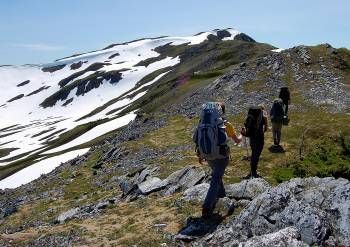
Objective
To determine the dynamics and climate responses of subalpine-alpine treeline distribution.
Methods
- Collect cores from trees near treeline and mark their locations.
- Conduct dendrochronology analyses on cores to determine age and annual productivity.
- Analyze productivity against time and environmental covariates.
Status
In 2009 a pilot study collected cores from 36 Hemlocks at or near treeline at six sites in southeastern Alaska. These cores showed a moderately positive trend towards increasing productivity since 1875.
Analysis of environmental variable effects is ongoing and we will collect more data in summer 2012.
Principle Inverstigator
Sanjay Pyare Ph.D. University of Alaska Southeast
Funding & Contributing Institutions
Alaska EPSCoR and National Science Foundation
The Alaska Gap Analysis Project (2009-present)
Modeling range and distribution of terrestrial vertebrate species in Alaska.
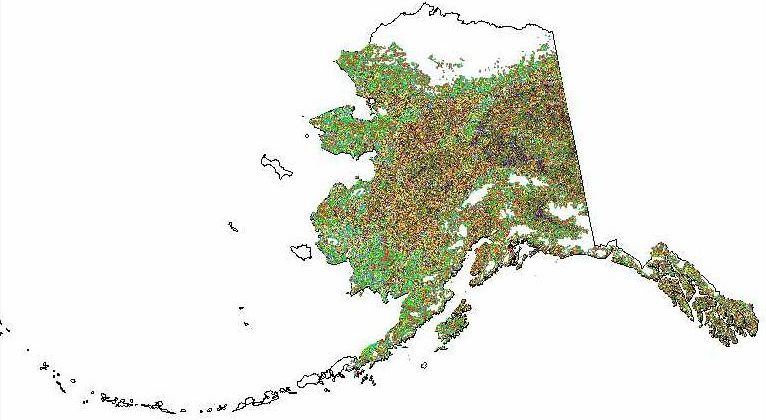
Objective
To produce spatially explicit models that predict the range and distribution of terrestrial vertebrate species in Alaska to support analysis of conservation status.
Methods
- Create a comprehensive species list of vertebrate species to be modeled.
- Develop a database of occurrence records, geographic range, wildlife habitat associations.
- Predict the distribution of each species using a combination of inductive and deductive modeling techniques
- Produce final maps for use in gap analysis
Status
Ancillary data were developed and screened and databases to house records for terrestrial vertebrate species and wildlife habitat relationships were also created. Inductive models have been drafted and reviewed internally and a module to automate inductive models was created.
The next steps are to further process ancillary data, subject inductive models to a second review, run deductive models and conduct an expert review of maps an analyses.
Full Project Description
The Alaska Gap Analysis Project (2009-present)
Principal Investigator(s):
Tracey Gotthardt (University of Alaska Anchorage), Sanjay Pyare, PhD (University of Alaska Southeast), Falk Huettmann, PhD (University of Alaska Fairbanks)
Funding Sources & Contributing Institutions
The Alaska Natural Heritage Program (AKNHP), the University of Alaska Anchorage (UAA) and the United States Geological Survey (USGS) National GAP Analysis Program.
Aleutian Tern Conservation Assessment (2008-Present)
Evaluating abundance and trends at historical colonies
Objective
To evaluate survey techniques for anevaluation of abundance and trends at historical colonies; to determinatin wintering grounds for an evaluation of non-breeding stressors.
Methods
- In 2008 four methods to census terns (strip transect, variable area transect, distance sampling and low altitude aerial photography) were tested.
- in 2010 113 terns were captured and equipped with geolocator devices that determine latitude from day length and longitude from solar noon and record a bird’s position.
- Position data was downloaded and analyzed from recaptured terns.
Findings and Status
Distance sampling for occupied nests can be applied as an inexpensive, statistically valid and repeatable method to monitor tern populations. Of the terns fitted with geolocators, one was recaptured in 2011 and data from the recovered geolocator indicates that the bird overwintered in Indonesia. In 2012 we hope to recapture more terns with geolocators.
Principle Investigators
Sanjay Pyare Ph.D. (University of Alaska Southeast), Mike Goldstein Ph.D. (US Forest Service), David Duffy Ph.D. (University of Hawaii), Susan Oehlers (US Forest Service), Nathan Catterson (US Forest Service), Dave Irons Ph.D. (US Fish and Wildlife Service)
Funding & Contributing Institutions
Alaska Department of Fish and Game, U.S. Forest Service (Yakutat Ranger District & Tongass National Forest), U.S. Fish and Wildlife Service, University of Hawaii
Amphibian Biogeography and Conservation (2004-present)
Conservation status assessment of boreal toad and future monitoring
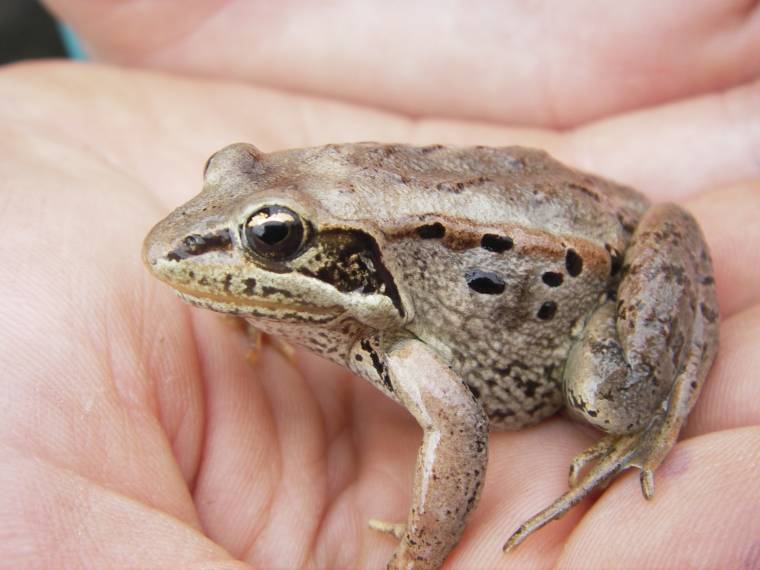
Objectives
To assess the conservation status (distribution and trends) of the boreal toad (Bufo boreas) in Southeast Alaska and establish a framework for future monitoring.
Methods
- A 2 year pilot study of the spatial distribution, habitat characteristics and sampling of breeding sites was conducted at 544 wetland sites on Prince of Wales Island, Admiralty Island and in Upper Lynn Canal.
- We also assessed breeding site occurrence, evaluated microhabitat associations of toad occurrence and investigated sampling designs for low breeding site occupancy situations in Glacier Bay National Park.
Findings
Our pilot study indicated that boreal toads occupy about 17.5% of wetland habitat and breed in 8.1% of this landscape. At ten sites we also sampled for chytrid fungus, which was found in all sites and on one in three toads. Finally, we determined that rough skinned newts occupy 9% of their habitat.
In Glacier Bay we found evidence of toads in 9% of wetlands and the breeding site encounter rate was <5%. For full results and sampling design recommendations see Pyare et al below.
SEALAB anticipates working with the Alaska Amphibian Working Group to formulate a 3-5 year cycle, multi-agency monitoring initiative.
Publications
Principle Investigators
Sanjay Pyare Ph.D. The University of Alaska Southeast
Funding & Contributing Institutions
U.S. Forest Service, Alaska Department of Fish and Game, the National Park Foundation, Glacier Bay National Park, the Denver Zoological Society, and the US Geological Survey.
Distribution and Dispersal of Brown Bears in Rapidly Deglaciating Landscape (2009-2011)
Establishing a current baseline of brown bear distribution for future distribution modeling relating to climate change
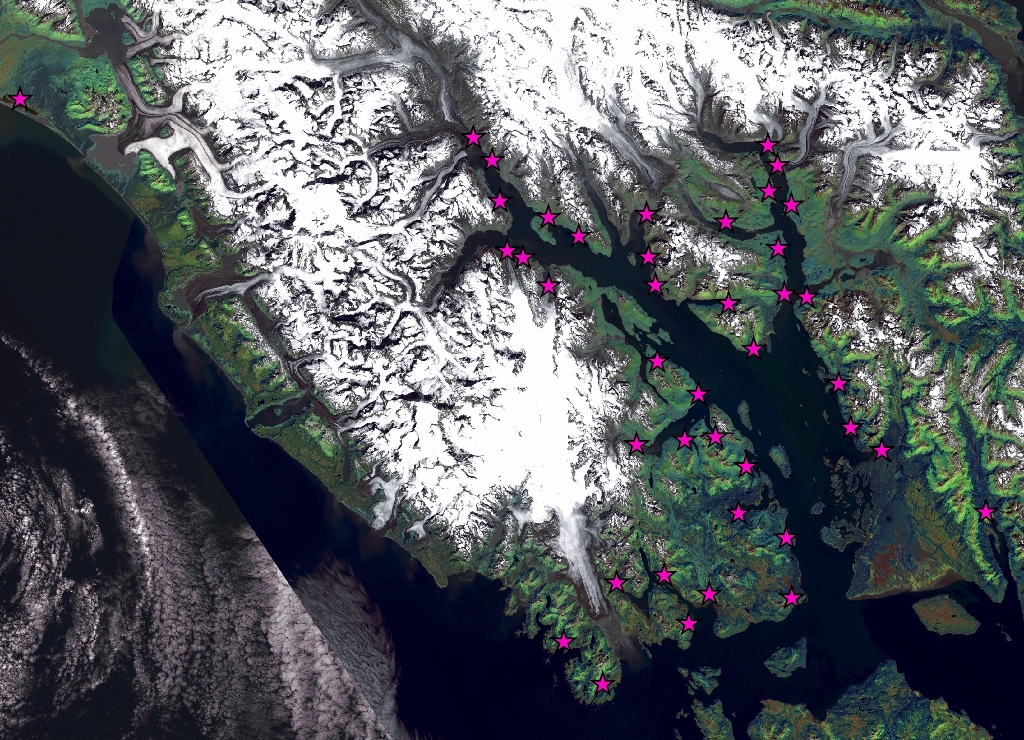
Objectives
To establish a current baseline of brown bear distribution as it relates to glacial retreat and post-glacial plant/stream succession for modeling future distribution. This model will serve two main functions: 1) to help us better understand the effects of climate change on brown bears; 2) to predict future bear activity in order to minimize bear-human conflicts.
Methods
- Bear species were detected non-invasively using visual observations, tracks, and genetic analysis of hair.
- 2-7 repeat surveys at forty shoreline sites in Glacier Bay National Park were taken.
Status
The principal investigators collected 145 bear hair samples and all samples were extracted for DNA and tested for species and gender. Fifty brown bear samples were analyzed to seven microsatellite loci for individual identification. Analyses of genetic relatedness, individual bear movements, and preliminary landscape genetics are ongoing.
Principle Investigators
Sanjay Pyare Ph.D. (the University of Alaska Southeast), Tania Lewis, Park Ranger (National Park Service)
Funding & Contributing Insititutions
National Park Service, Alaska EPSCoR
Landscape Genetics of Boreal Toads (2010-2011)
Investigating gene flow and connectivity of boreal toad populations from two distinct landscapes in Southeast Alaska
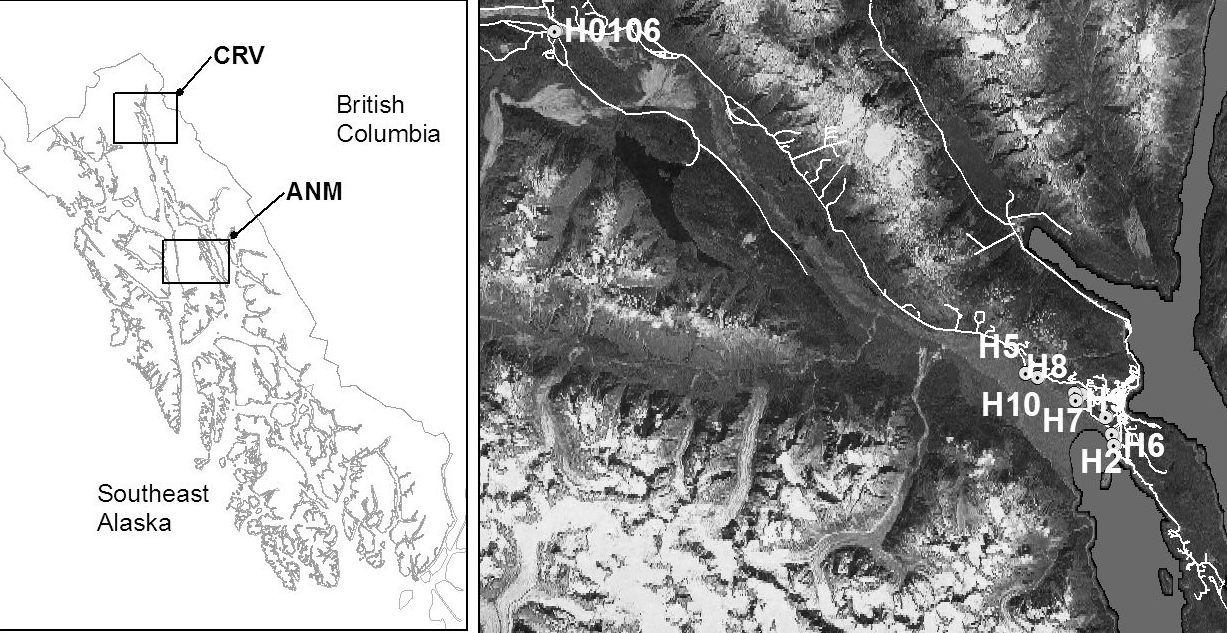
Objectives
To quantify the effects of anthropogenic landscape features and environmental factors on gene flow and connectivity of boreal toad (Bufo boreas) populations from two distinct landscapes in Southeast Alaska (Admiralty Island, ANM, and the Chilkat River Valley, CRV).
Methods
- Genetic samples were collected from known breeding sites.
- DNA samples were extracted and analyzed to determine genetic differences between sites.
- Landscape resistance models were developed based on environmental and anthropogenic factors.
Findings
We found a strong effect of saltwater on genetic distance of CRV populations, but no landscape effects were found for the ANM populations. No anthropogenic factors were found to influence population genetics, but none of our sites see heavy human use. Since boreal toads appear to disperse well regardless of environmental factors they may be well suited to expand their range northward into newly available habitat and be resilient in the face of a warming trend.
Publications
Principle Investigators
Jennifer Moore Ph.D. (Michigan State University), Dave Tallmon Ph.D. (the University of Alaska Southeast), Julie Nielsen Ph.D. (the University of Alaska Southeast), Sanjay Pyare Ph.D. (the University of Alaska Southeast)
Funding Sources & Contributing Institutions
Alaska EPSCoR, National Science Foundation, Alaska Department of Fish and Game, the US Forest Service and the US Geological Survey.Shipstrike Risk Assessment in Southeast Alaska Waters (2006-2011)
Modeling whale ship-strike potential
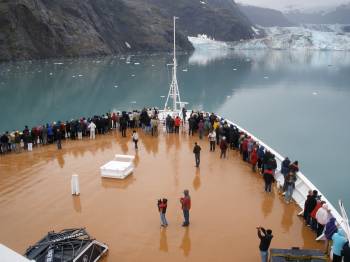
Objectives
To model ship-strike potential by recording the frequency and severity (closeness) of encounters between ships and whales.
Methods
- Used rangefinder binoculars to measure ship-whale distances
- Recorded position and ship speed with GPS devices.
- Analyzed whale movement as a function of ship velocity.
Findings
Cruise ships encountered whales at on average 114 m closer when traveling at speeds greater than 11.8 knots. Assuming that the closer ships come to whales the more likely they are to be struck, our results suggest that reduced ship speed may be an effective management action in reducing the probability of a collision.
Publications
Gende Bayesian approach for whale ship interactions
Principle Investigators
Scott M Gende (National Park Service),A Noble Hendrix (R2 Research Consultants Inc), Karen R Harris (University of Washington), Bill Eichenlaub (University of Alaska Fairbanks), Julie Nielsen (University of Alaska Southeast), Sanjay Pyare (University of Alaska Southeast)
Funding & Contributing Institutions
The National Park Service, The National Fish and Wildlife Foundation, The Pacific Life Foundation and the National Park Foundation.
Evaluating the Road-Effect Zone on Wildlife Distribution (2002-2011)
Multivariate modeling approach for evaluating the road effect zone
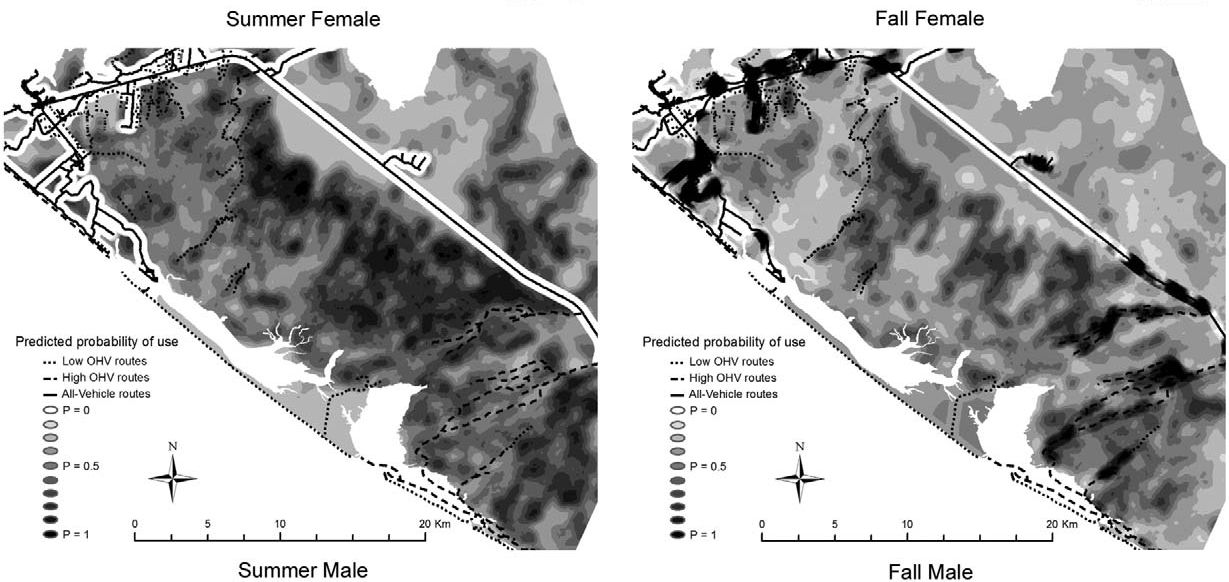
Objective
To derive a spatially explicit multivariate model approach for evaluating the road effect zone and then use these models to develop a planning framework with the goal of balancing habitat conservation and subsistence-hunting access.
Methods
- Interviewed hunters to determine road use and the maximum distance they would be willing to haul a moose (Alces alces).
- Evaluated ecological disturbance threshold for moose from increasing route activity
Findings
A negative relationship exists between moose occurrence and OHV routes where routes neared primary moose habitat. The spatial arrangement of routes that are outside of important moose habitat but within the reach of preferred harvest ground could provide a balance in the conservation of wildlife habitat and subsistence hunting.
Publication
Evaluating the road-effect zone on wildlife distribution in a rural landscape
Principle Investigators
Colin Shanley M.S. (University of Alaska Fairbanks), Sanjay Pyare Ph. D. (University of Alaska Southeast), Gary P. Kofinas Ph.D. (University of Alaska Fairbanks)
Funding & Contributing Institutions
NSF IGERT Resilience and Adaptation Program, Alaska EPSCoR, US Forest Service (Alaska Region and Yakutat Ranger District)
Connectivity of Tongass Old Growth Reserves (1997-2011)
Modeling dispersal potential of the northern flying squirrel
Objectives
- To investigate dispersal potential of a key managament indicator, the northern flying squirrel.
- To generate a spatially explicit model of dispersal potential.
- To assess the functional connectivity of “small” conservation reserves.
Findings
At a broader scale extensive modifications to landscapes from clear cut logging and seral matrix appeared to influence spatial patterns of den use in flying squirrels. Core Den Areas where smaller and less varied than that reported for other portions of the species range and perceptual range is larger in clear cut areas than in second growth areas, but both forest types offer shorter ranges than expected. Flying squirrels will not persist long term in small OGRs without immigration, therefore the use of small OGRs as functional connections between larger OGRs is theoretically sound.
Publications
Principle Investigators
Sanjay Pyare, Ph.D. (University of Alaska Southeast), Winston P. Smith Ph.D. (United States Forest Service), Colin S Shanley M.S. (University of Alaska Fairbanks)
Funding & Contributing Institutions
U.S. Fish and Wildlife Service, U.S. Forest Service (Pacific Northwest Research Station), Denver Zoological Foundation, Earthwatch Foundation and the University of Wyoming.


